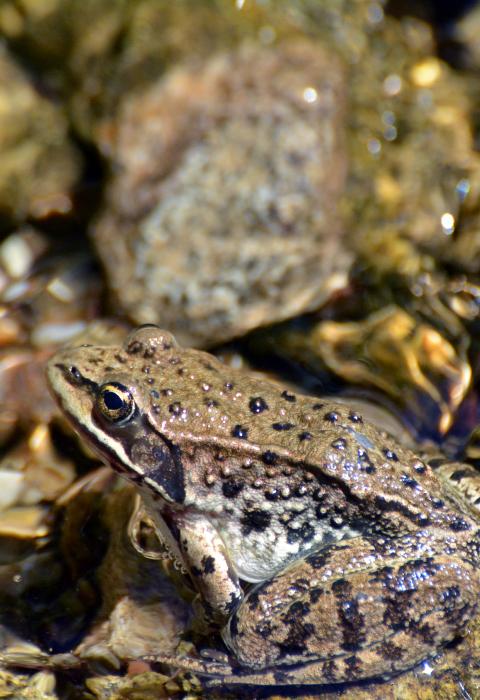Cottonwood Creek
Idaho
Cottonwood Creek is a tributary of Big Jacks Creek, and nearly three miles upstream of their confluence is designated as wild. The creek has dense riparian vegetation and tight meanders. Redband trout are found in the creek, and mule deer are common in the area. Access to this remote area is difficult.
Designated Reach
March 30, 2009. Cottonwood Creek from its confluence with Big Jacks Creek to the upstream boundary of the Big Jacks Creek Wilderness.
Outstandingly Remarkable Values
Botany
The area is home to a rare plant, the Owyhee River forget-me-not. Found nowhere else but this river system, this species occupies north-facing vertical rhyolitic cliffs, sheltered crevices and shady grottos. The pale blue flowers of this species contrast sharply with the backdrop of dark volcanic rock. May and June are the best time to view this species in full flower.
Fish
Cottonwood Creek is outstandingly remarkable from a fisheries population and habitat standpoint. When considered in combination with Big Jacks, Little Jacks, and Duncan Creeks, the streams are among the 17% of desert streams in the Northern Basin and Range identified as aquatic-habitat strongholds for redband trout, a BLM sensitive species and a state of Idaho species of special concern.
Recreation
Cottonwood Creek and the wilderness through which it flows are notable for their solitude and remoteness.
Scenery
Canyons in this region are dominated by a mixture of high, vertical lines and forms of coarse-textured, red, brown, or blackish eroded cliffs, often glazed with yellow to light green micro-flora. Intertwined with the vertical features are steep diagonal lines that frame triangular forms associated with talus slopes. Slopes feature a mosaic of medium-textured, yellow and subdued green sagebrush-bunchgrass communities and/or dark green juniper, as well as either medium-textured, reddish rhyolite rubble fields or coarse-textured, blackish basalt rubble fields.
Wildlife
Deep canyon habitats are important to wildlife species in desert and semi-desert environments in the western United States, especially when the canyons possess a large diversity of plant species such as those that exist along the streams of the Owyhee, Bruneau, and Jarbidge river systems.
The wilderness in the Big Jacks Creek Basin consists of rugged canyons, streams and plateaus that provide habitat for redband trout, mountain quail, sage hens, mountain lions, mule deer, antelope, bobcats, coyotes, and bighorn sheep.
Areas in the Bruneau River systems are considered Preliminary Priority Habitat for greater sage-grouse. Idaho BLM sensitive species include bald eagles, yellow-billed cuckoos, prairie falcons, ferruginous hawks, several neotropical migratory bird species, several bat species, Columbia spotted frogs, and western toads. Cliffs also support spotted and Townsend's big-eared bats, Idaho BLM sensitive species.

